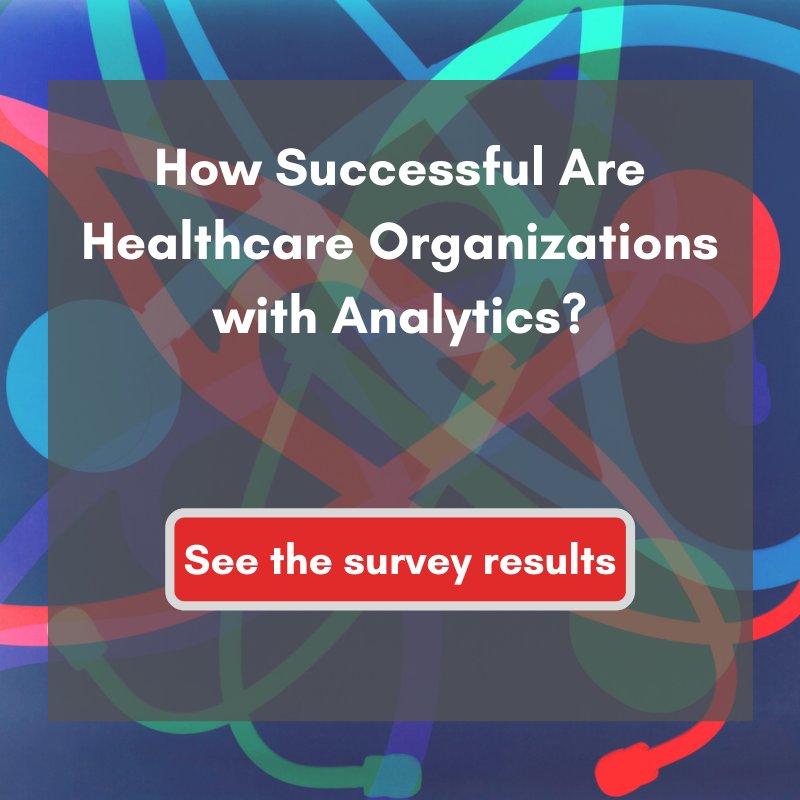When you’re embarking on a healthcare analytics program, data trust is essential to success. With things like reimbursement rates, patient satisfaction, patient safety, antibiotics usage, and more on the line, you need to know that the numbers you’re relying on to make decisions are trusted and consistent throughout the organization.
However, many healthcare organizations don’t currently have the trust they need in their data. Let’s examine.
Healthcare analytics is grounded due to lack of data trust
If you were the pilot of a plane and your co-pilot had different data on her dashboard than you had on yours, would you take off from the runway? Of course not. Your plane is grounded until the two of you are looking at the same data in the same way and can make informed decisions based off of that data.
Unfortunately, many healthcare organizations today are like the pilots of a plane with unreliable data. They can’t trust the numbers they are looking at, so healthcare analytics projects don’t get off the ground.
I n fact, a HIMSS Analytics survey, sponsored by Dimensional Insight earlier this year, showed that while two-thirds of healthcare organizations have an executive dashboard to support strategic decision-making, only one-third use it on a daily basis to make decisions. That means that in total, less than 1 in 4 healthcare organizations is leveraging its data at an executive level daily.
n fact, a HIMSS Analytics survey, sponsored by Dimensional Insight earlier this year, showed that while two-thirds of healthcare organizations have an executive dashboard to support strategic decision-making, only one-third use it on a daily basis to make decisions. That means that in total, less than 1 in 4 healthcare organizations is leveraging its data at an executive level daily.
Another survey we conducted of healthcare CIOs shows a lack of data trust is likely a large barrier to analytics success:
• 71% of respondents report discrepancies in their data across organizational departments
• 50% report discrepancies in understanding of previously existing business rules
• 50% report discrepancies between organizational definitions and industry definitions
Data trust needs to be at the heart of analytics
In order to drive improved outcomes, healthcare organizations need to be able to rely on trustworthy data that is standardized across the health system. At Dimensional Insight, we believe in three keys to improving data trust:
• Simplicity
• Consistency
• Transparency
Simplicity in that you want your users to be able to look at the right data for their role in the organization and view it in the way that will best enable them to make decisions.
Consistency in that users need to see that data is being understood in the same way across the health system. They need to understand how specific measures and metrics were created and be able to view the underlying definition.
Transparency in that users need to be able to see how the definition of a metric was created, who contributed to that definition, and the logic behind it. If changes to a metric are needed, there needs to be insight and discussion on why.

Data trust in action
One example of a health system that is able to drive analytics results because it has that foundation of data trust is EvergreenHealth. The hospital system, located across Lake Washington from Seattle, relies on Dimensional Insight’s Diver Platform to help it integrate its data and provide that base of data trust that is necessary to drive meaningful analytics programs.
One example of an analytics project that EvergreenHealth has undertaken is its effort to reduce opiate prescribing at its hospitals. This started with a simple report request from the pharmacy department. It wanted a daily report of all prescribed controlled substances. From this report and its distribution to physicians, EvergreenHealth was able to see some behavior change in prescribing patterns.
Following that success, the organization developed a metric to measure the opiate prescription supply trend over time. This metric was included in the organization’s executive dashboard so top hospital executives were able to monitor it.
Finally, that metric evolved so that now EvergreenHealth uses the morphine milligram equivalent (MME) to measure its opiate prescribing patterns. This metric is one that is more commonly used and allows EvergreenHealth to compare its patterns to those of peer institutions. Report cards on prescribing patterns are pushed out to hospital-based and ambulatory-based providers so they can measure their progress.
As a result of these efforts, EvergreenHealth was able to reduce its average MME per encounter per month by 14% over time.
Conclusion
Many healthcare organizations currently aren’t using the analytics they have because they lack trust in the data from which they are being asked to make decisions. Health systems need to deploy data management and analytics solutions that make accessing data simple for users, ensure consistency of data definitions between departments, and provide transparency so users can see who has collaborated on and changed data definitions, and when that happened.
With a foundation built on data trust, healthcare organizations can execute on analytics projects that deliver stellar results for their health systems and move the needle on patient care and outcomes.
Related reading
- How to Improve the Performance of Your Emergency Department
- The State of Healthcare Interoperability in 2019
- Healthcare Rocks: How Technology Is Helping to Drive Improved Outcomes
- Solving Hospital CEOs’ Pressing Challenges With Analytics - April 15, 2024
- Navigating the Wellness Wave: Wine & Spirits Data Strategy - April 9, 2024
- Takeaways from HIMSS24 - March 26, 2024



